This is a continuation of a series of posts on the Nikon D850. You should be able to find all the posts about that camera in the Category List on the right sidebar, below the Articles widget. There’s a drop-down menu there that you can use to get to all the posts in this series; just look for “D850”.
I repeated the PDAF vs CDAF test in the previous post on the Nikon 70-200 mm f/2.8E FL at 200 mm:
PDAF with optimal AF Adjustment wide open:
I’ve plotted the three Adobe RGB color channels. The graph presents displacement of the image projected on the sensor from the desired green-channel focal plane. Negative numbers indicate front-focusing. The image-plane shift is in micrometers (um). The separation of the focal distances of the three color planes is because of the longitudinal chromatic aberration (LoCA) of the lens. The dots indicate the results for each of the ten exposures at each f-stop. I’ve plotted lines indicating the average (aka mean or mu) of the sample set bolder and added thin lines above and below the means that are one standard deviation (sigma) away from them.
You can see that the lens has a fair amount of focus shift.
Here is the same set of curves for CDAF:
The spread is worse, but the absolute extreme errors are lower because CDAF compensates for focus shift by focusing at the taking aperture.
Now we’ll look at the circles of confusion (CoCs) implied by the defocusing in the above plots.
CDAF produces lower errors.
Now I’ll plot the green channel data for both CDAF (dotted lines) and PDAF (solid lines) on the same chart.
The CoCs:
I want to emphasize that the PDAF option is getting an unrealistic advantage here, in that it is perfectly adjusted for 200 mm at f/2.8.
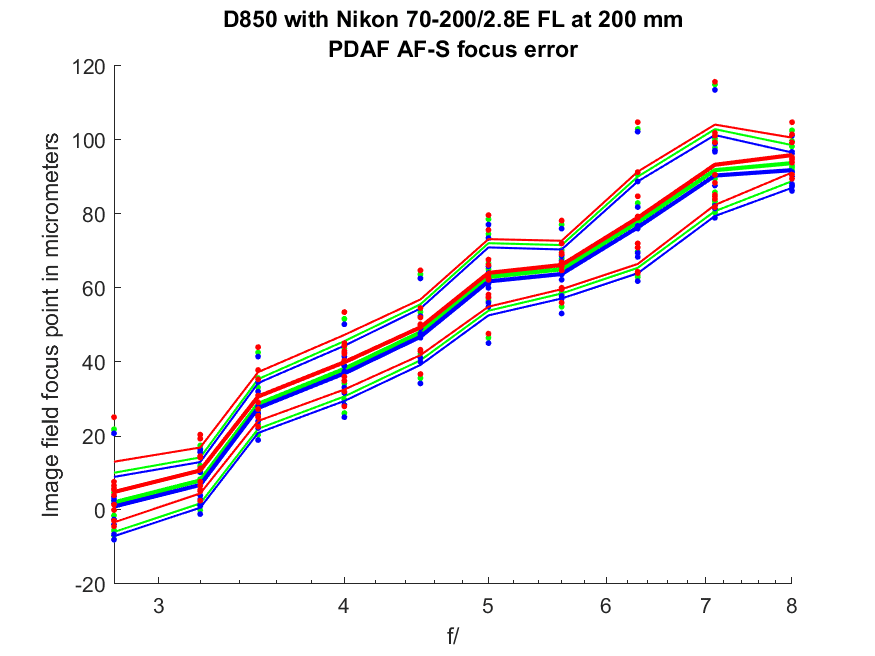
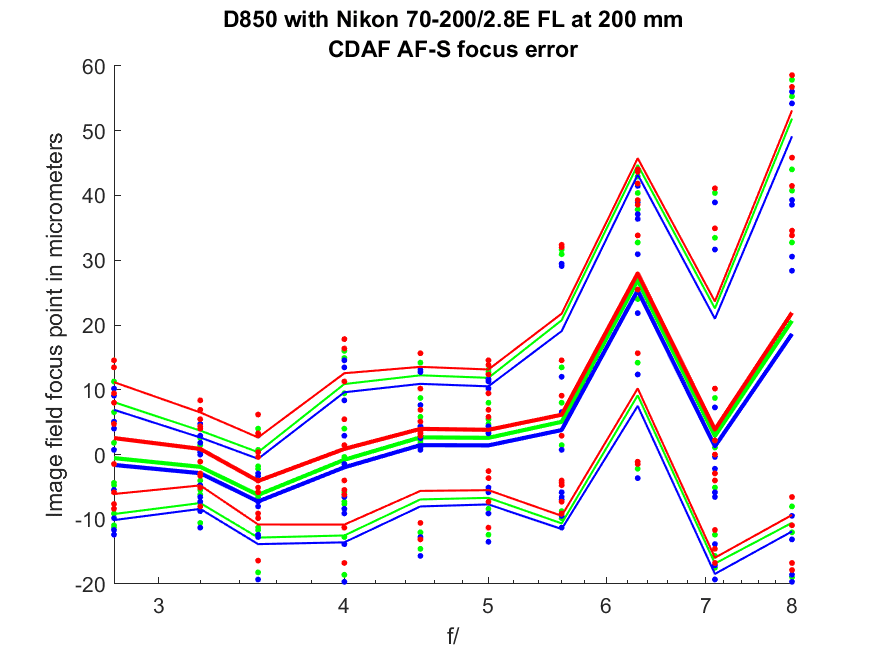
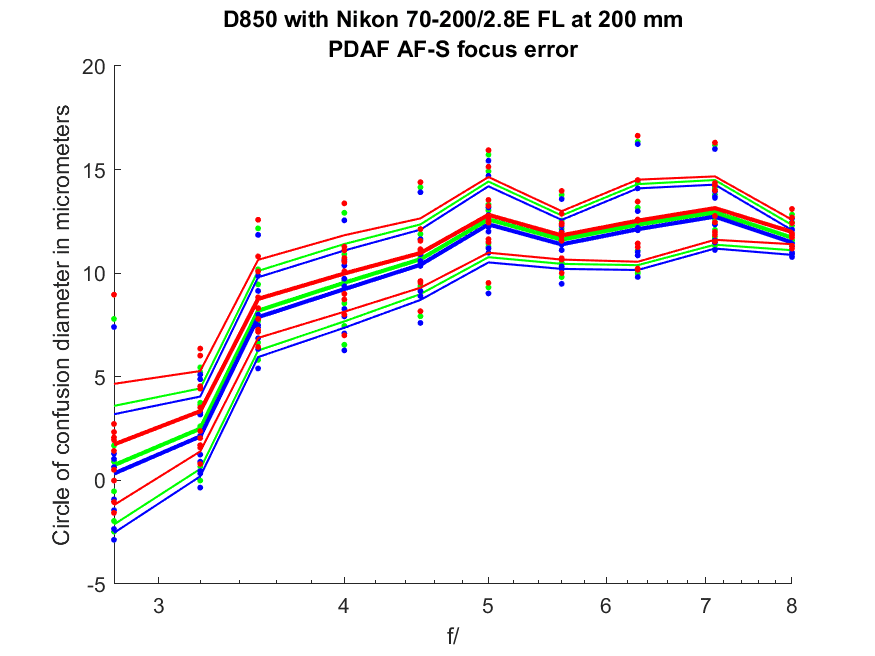
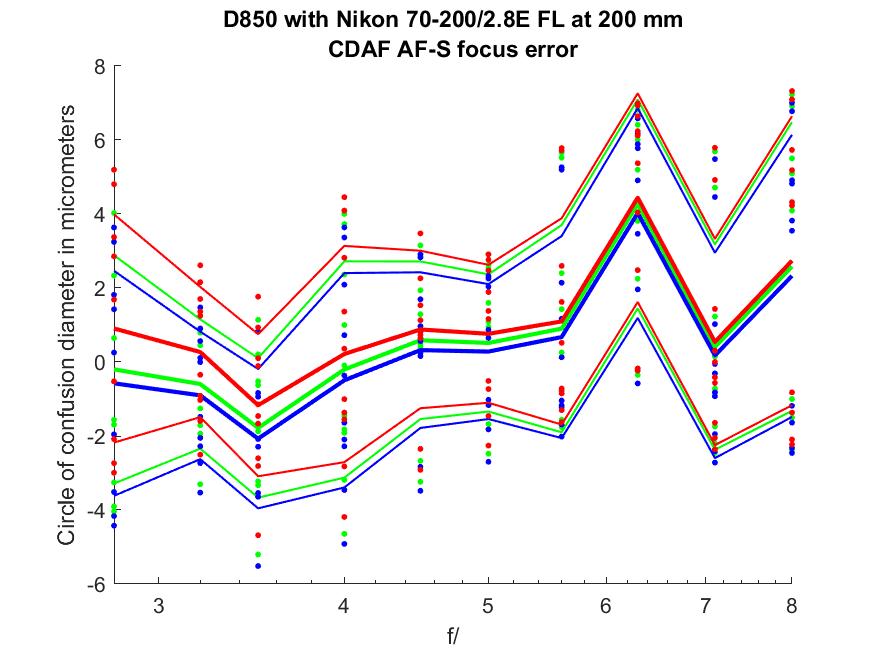
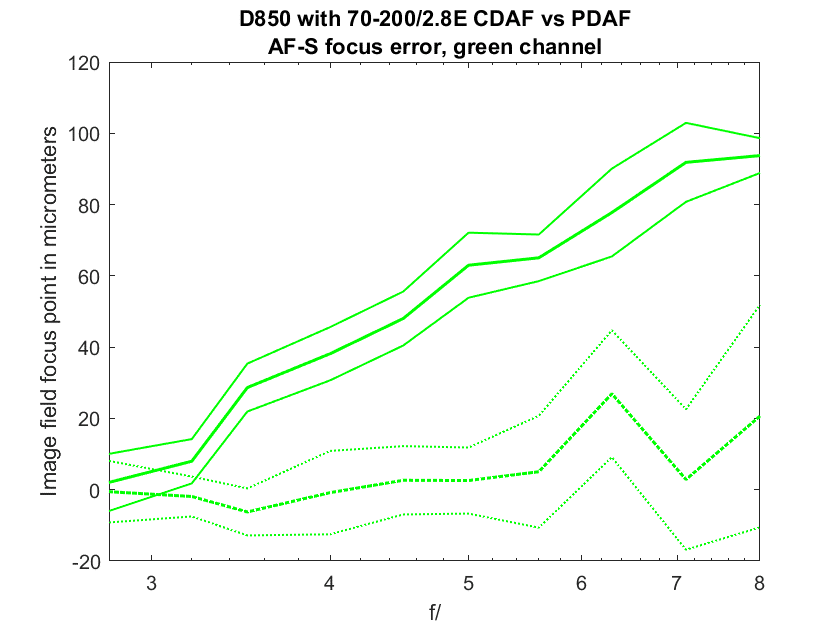
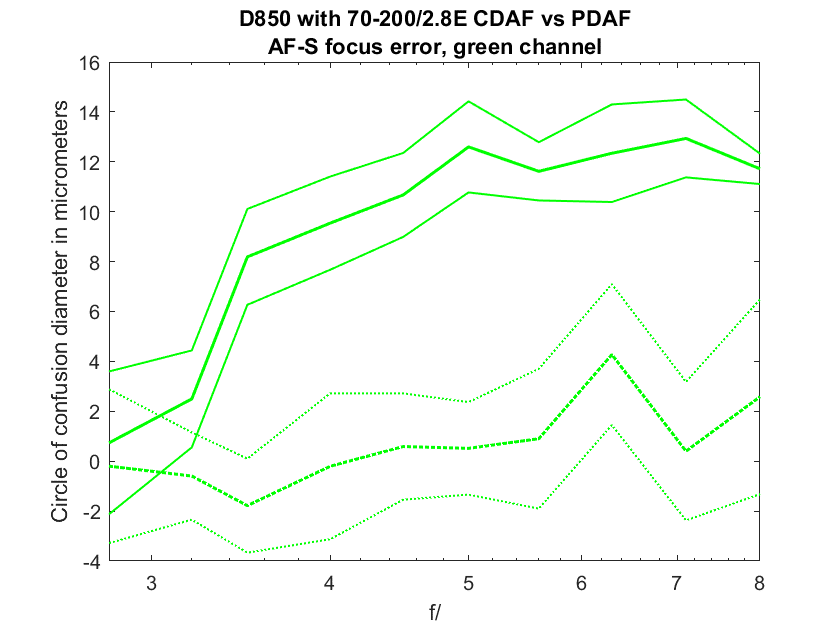
Focus shift at 200mm f/2.8 starts to disappear at a distance of 10m or greater. For portrait, usually shoot between f/2-4 so not an issue. For landscape, at infinity there is very little to no focus shift.
f/2.8-4* (typo above)